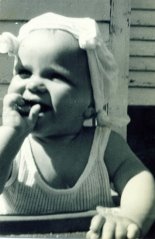Let's get some of the basics of poetry down. Start with rhythm. What is rhythm in poetry? One definition is a musical quality produced by repetition of stressed and unstressed syllables. So much, so unpoetic. Rhythm varies with languages. For instance, Japanese doesn't really have stresses but we're dealing with English and Irish so we're talking stressed syllables.
The metre of a line of poetry is the timing of the rhythm, think metronome, not speed. Think beat. Think hip-hop. The beat there is often very regular. This is called scansion. So if someone says your line doesn't scan, it means there's something off about the rhythm. Of course, it may be delibrate.
A rhythmic line is usually divided into beats or feet. For example an iambic foot is an unstressed syllable followed by a stressed syllable.unKNOWN, aLONE, tromBONE
My LOVE is LIKE a RED red ROSE
de-dum de-dum de-dum de-dum
There are 4 feet in this line by Robert Burns.
The QUEEN of HEARTS still MAKing TARTS and I not MAKing HAY
6 iambic feet and an incomplete, stressed syllable at the end in this line from Raglan Road by Patrick Kavanagh. Ending on a stressed syllable is known as a masculine ending. Guess what ending on an unstressed syllable is known as? Guess who called it that? Yes, a man.
But the most common is iambic pentameter. 5 iambs. This is basically a natural speaking rhythm. And with one line in one breath, the most common metre of lines by Shakespeare.
Shall I comPARE thee TO a SUMmer's DAY
de-DUM de-DUM de-DUM de-DUM de-DUM
There's also trochee. DUM-de.
HUBble BUBble TOIL and TROUble
DUM-de DUM-de DUM-de DUM-de
(from Macbeth) Trochaic Tetrameter.Irish POets, EARN your TRADE
DUM-de DUM-de DUM-de DUM
(Yeats) a 4 feet line. Trochaic Tetrameter but the final foot is incomplete so it's called catalectic. but a couple of lines further down he has:
All OUT of SHAPE from TOE to TOP
with an extra syllable at the start of the line. Called anacrusis. What about this one:
Twas the NIGHT before CHRISTmas and ALL through the HOUSE
An anapest. de-de-DUM. This line is an anapestic tetrameter. This type of rhythm has a light feel to it.And this one?
FASTer than FAIRies, FASTer than WITCHes
DUM-de-de DUM-de DUM-de-de DUM-de
(Robert Louis Stevenson) a Dactylic foot then an trochaic, repeated. This mimics the rhythm of the train he was writing about.
There are also:
- Spondee – two stressed syllables together
- pyrrhic – two unstressed syllables together (rare, usually used to end dactylic hexameter)
Previously posted on writing.ie



























